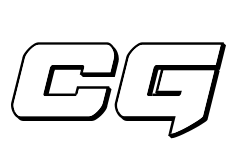In the fast-paced world of web development, creating an engaging web experience is not just about aesthetics—it’s about strategy, technology, and understanding your audience. Here are five essential tips to help you craft a website that captivates, converts, and leaves a lasting impression.
1. Design Principles
Mobile First: In a world where smartphones reign supreme, designing for mobile devices is no longer an option—it’s a necessity. Mobile-first design ensures that your website looks and performs flawlessly on smaller screens, providing a seamless user experience across devices.
Speed and Optimization: In the digital age, patience is a rare commodity. A slow-loading website can send potential customers running for the hills. By optimizing your site for speed, you not only improve user experience but also boost search engine rankings—a win-win for your business.
Conversion Optimization: Your website should do more than just look pretty—it should drive results. Conversion optimization involves strategically placing elements on your site to encourage users to take action, whether it’s making a purchase, signing up for a newsletter, or filling out a contact form.
Design Trends of 2024: Staying ahead of the curve means keeping an eye on emerging design trends. From dark mode and augmented reality to micro-interactions and 3D elements, incorporating the latest trends into your website can help you stand out from the competition and wow your audience.
2. Messaging
Knowing Your Target Audience: The key to effective messaging is knowing your audience inside and out. Take the time to research their demographics, behaviors, and pain points, and tailor your messaging accordingly.
Crafting Product/Service/Brand Messaging: Once you understand your audience, it’s time to craft your message. Focus on addressing their pain points and highlighting the benefits of your product or service in a way that resonates with them on a personal level.
Informational vs. Salesy – Blend Your Messaging: Finding the right balance between providing valuable information and making a sales pitch is crucial. Avoid coming across as too pushy or salesy, and instead focus on building trust and credibility with your audience.
3. Technology
Modern Tech Stacks You Can Create With: The technology stack you choose can have a significant impact on the performance and scalability of your website. From JavaScript frameworks like React and Angular to backend solutions like Node.js and Django, the possibilities are endless.
Utilizing New Tech to Stay Ahead: Innovation is the key to staying ahead of the competition. Explore new technologies like artificial intelligence, blockchain, and progressive web apps to create unique and engaging experiences for your users.
Custom Database to Store User Data and User Engagement: In addition to off-the-shelf solutions like Google Analytics and Hotjar, consider implementing a custom database to store user data and track engagement. This will allow you to gather valuable insights into user behavior and preferences, enabling you to make data-driven decisions to improve your website.
4. Analytics
Custom Dashboard to Understand Your Customers: A custom analytics dashboard can provide you with invaluable insights into how users interact with your website. Track metrics like page views, bounce rate, and conversion rate to gain a deeper understanding of your audience and optimize your site accordingly.
Analytics Goals and KPIs: Define clear goals and key performance indicators (KPIs) for your website, such as increasing sales, generating leads, or improving user engagement. Use analytics to track your progress towards these goals and make informed decisions to drive results.
What Can Be Measured: In addition to traditional metrics like traffic and conversions, consider measuring more qualitative aspects of your website, such as user satisfaction and brand perception. Tools like surveys and heatmaps can provide valuable insights into how users perceive your site and where there may be room for improvement.
5. Key Goals for Your Site
Convert Customers: Ultimately, the goal of your website is to convert visitors into customers. Whether it’s making a purchase, signing up for a service, or filling out a form, every element of your site should be designed with conversion in mind.
Display Your Work: Your website is your digital portfolio—a showcase of your skills, expertise, and past projects. Use it to highlight your best work and demonstrate why potential customers should choose you over the competition.
Informational Hub: In addition to promoting your products or services, your website can also serve as a valuable resource for your audience. Create blog posts, tutorials, and other informative content to establish yourself as a thought leader in your industry and provide value to your visitors.
Press and News: Authority in Your Industry: Highlighting press mentions and industry accolades on your website can help build credibility and authority in your field. Use this section to showcase your achievements and position yourself as a leader in your industry.
Wow Everyone with Design and Win Awards (Make Noise – Free Marketing): Finally, don’t be afraid to show off your design chops. A visually stunning website not only captures attention but also builds brand recognition and loyalty. And who knows? A well-designed site might just earn you some awards and free marketing in the process.
Crafting an engaging web experience is a journey—one that requires careful planning, creativity, and a deep understanding of your audience. By following these essential tips and staying ahead of the curve, you can create a website that not only looks great but also drives results for your business. Ready to take your web presence to the next level? Let’s chat.



